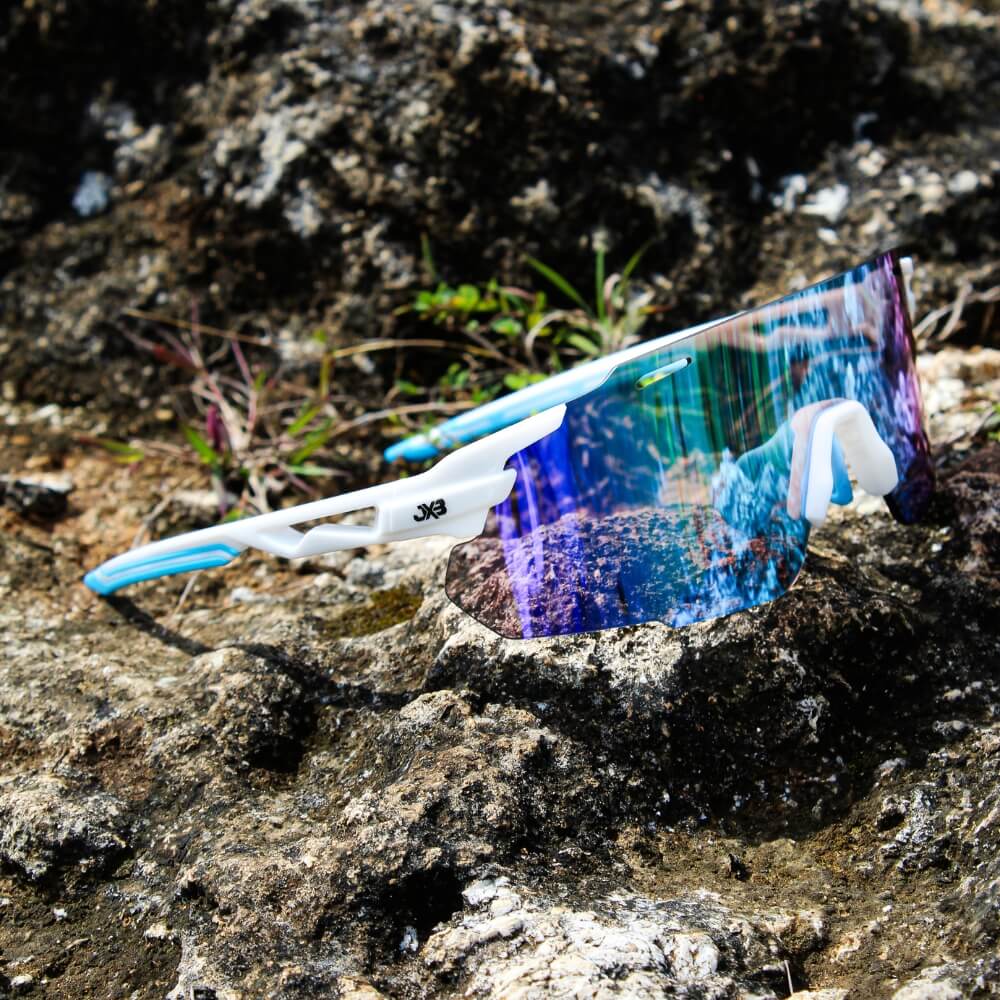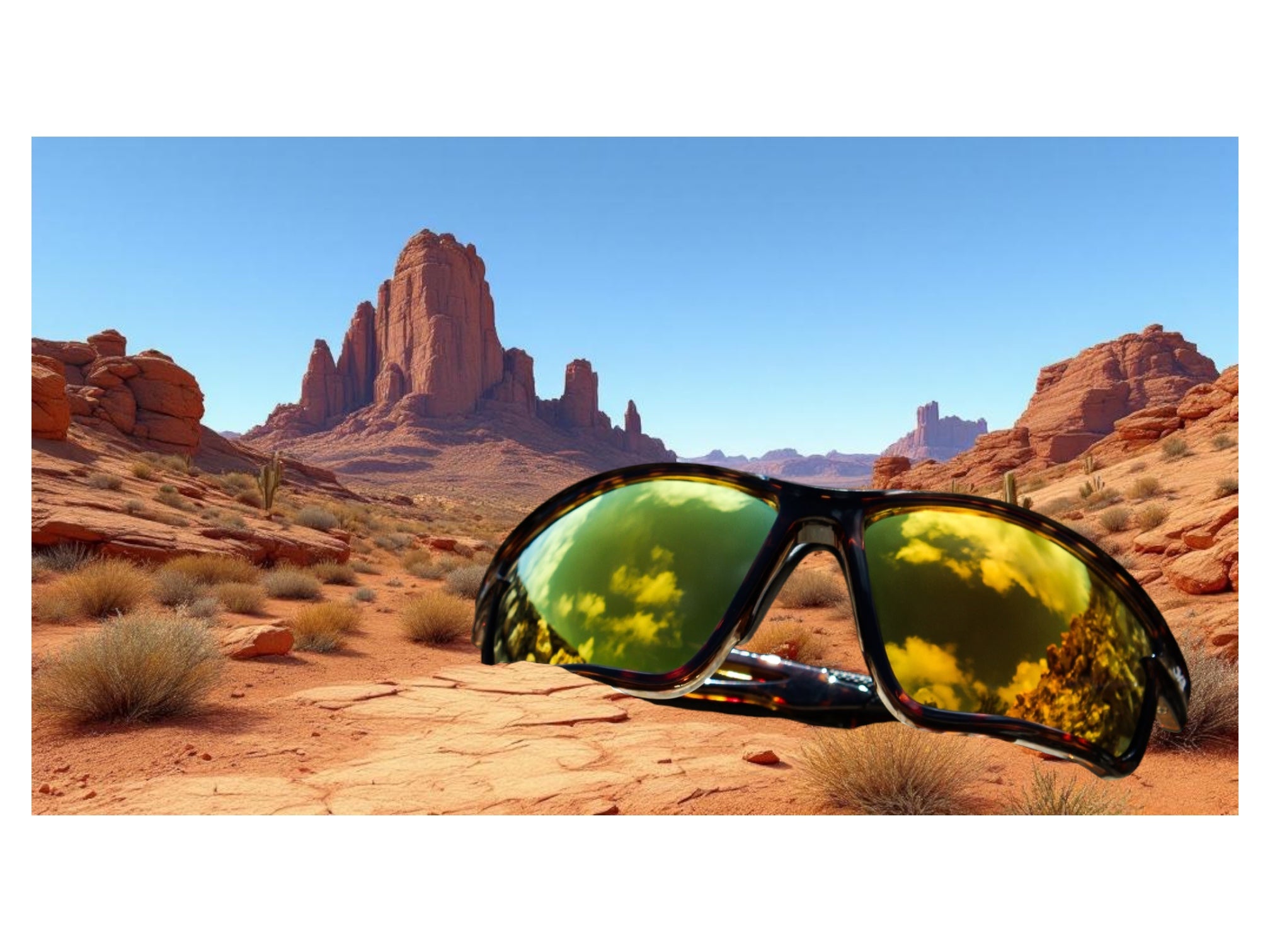Introduction to Mountain Biking Sunglasses
Mountain biking presents unique challenges that demand specialized gear to ensure optimal performance, safety, and comfort. One often overlooked but essential accessory is a high-quality pair of sunglasses. These are not mere fashion statements; they are specifically designed to meet the needs of riders navigating rugged trails, unpredictable weather, and varying light conditions.
Mountain biking sunglasses act as much more than simple UV blockers; their features cater to the demands of intense activity on uneven terrains. Riders require eyewear that offers superior protection from debris, branches, wind, and harsh sunlight, all while ensuring visibility remains uncompromised. Top-tier models emphasize durability, lightweight construction, and adaptability to changing landscapes. With advanced lens technologies, they can enhance contrasts, reduce glare, and improve depth perception—counting as critical benefits when tackling intricate trails.
Comfort is another key consideration. Mountain biking sunglasses are often designed with ergonomic frames for secure fits during high-speed rides, minimizing distractions caused by movement or slippage. Anti-slip nose pads, adjustable temple arms, and lightweight materials ensure stability, even during prolonged use under strenuous conditions. Ventilation systems built into select models also prevent fogging, preserving crystal-clear vision in humid or damp environments.
Lens options vary across designs, featuring photochromic, polarized, or interchangeable lenses tailored to specific needs. Photochromic lenses automatically adjust to varying light, while polarized lenses provide maximum glare reduction, particularly in areas with strong sunlight reflecting off water or rocks. Interchangeable lens systems allow riders to adapt their eyewear to diverse lighting conditions swiftly. These features collectively address every conceivable scenario a mountain biker might encounter.
|
By emphasizing performance-driven engineering and functionality, mountain biking sunglasses transition from being an accessory to an integral component of the riding experience. Their selection plays a pivotal role in ensuring both safety and enjoyment during trail adventures.
Importance of High-Performance Sunglasses in Mountain Biking
Mountain biking places unique demands on riders, and high-performance sunglasses play a critical role in ensuring safety, visibility, and comfort. The ability to navigate challenging terrains often depends on maintaining a clear line of sight, which effective sunglasses help achieve by reducing glare and sharp sunlight that can impair vision. Riders can experience sudden light transitions, such as moving from brightly lit open trails to shaded forest paths; high-quality sunglasses with adaptive lenses or specialized tints ensure optimal visibility in such changing conditions.
Eye protection is another considerable factor. Mountain biking exposes riders to hazards like flying debris, dirt, and even tree branches. Durable sunglasses act as a protective shield, reducing the risk of injuries caused by foreign objects. Additionally, they defend against harmful UV rays, which can cause long-term damage to the eyes. For mountain bikers who spend long hours outdoors, UV 400 protection or polarized lenses are essential for preserving ocular health while minimizing strain.
Comfort also factors into the equation. Long rides over rugged terrain require sunglasses with lightweight designs and ergonomic fits that stay securely in place during intense activity. Features like non-slip nose pads and adjustable temples enhance stability, allowing riders to focus on the trail without distractions or discomfort.
Ventilation systems integrated into some models prevent lens fogging during strenuous rides, a common issue in high-moisture environments. Without these features, compromised visibility could lead to misjudged turns or obstacles. High-performance sunglasses are not mere accessories but essential gear for mountain bikers seeking safety, performance, and an enjoyable riding experience.
Key Features to Look for in Mountain Biking Sunglasses
Mountain biking sunglasses are essential for protecting the eyes and enhancing visibility during rides. Selecting the right pair involves identifying features that cater to the demands of outdoor terrain and dynamic riding conditions.
Lens Technology
- Lenses should feature high-quality materials such as polycarbonate for durability and impact resistance.
- UV protection is critical for shielding the eyes from harmful ultraviolet rays during sunny conditions.
- Polarized lenses help reduce glare from reflective surfaces like water or wet trails, improving focus and clarity.
- Photochromic lenses offer adaptability, automatically adjusting tint levels based on light intensity.
Coverage and Fit
- Wrap-around designs ensure comprehensive protection against wind, debris, and sunlight from all angles.
- Adjustable nose pads and arms provide a custom fit to enhance comfort during long rides.
- The sunglasses should stay secure even under strenuous movements, ensuring stability without slipping.
Ventilation and Fog Resistance
- Frame ventilation systems minimize fog buildup caused by heat and sweat during intense activity.
- Anti-fog coatings on lenses further support clarity in humid conditions or rapid changes in temperature.
Weight and Durability
- Lightweight materials such as nylon or acetate are preferable for reducing strain on the face during extended wear.
- Frames should exhibit durability to withstand impacts, drops, and rugged trail conditions.
Compatibility With Helmets
- Mountain biking sunglasses should seamlessly fit with helmets, ensuring the combination is comfortable and offers uninhibited performance.
- Frames and arms designed for helmet compatibility avoid pressure points or interference while maintaining secure placement.
Color Tint Options
- Lens tints should be optimized for trail environments—amber or rose tints enhance contrast for spotting obstacles while gray tints provide neutral color perception suitable for varied terrain.
- Riders should choose based on the typical trail conditions they frequent.
Scratch and Water Resistance
- Scratch-resistant lenses ensure longevity, especially when riding through wooded or rocky areas where debris is common.
- Water-resistant coatings repel moisture, maintaining clear visibility in rainy or wet conditions.
By carefully assessing these critical features, riders can select sunglasses tailored to their performance needs and trail challenges, enhancing both safety and visibility during mountain biking ventures.
Lens Technology: Enhancing Vision and Reducing Strain
Lens technology plays a pivotal role in mountain biking sunglasses by improving visual clarity and reducing eye strain. Riders encounter varying light conditions, terrain, and obstacles, requiring lenses that can adapt seamlessly to enhance overall performance and safety.
Modern sunglasses offer advanced materials, such as polycarbonate and Trivex, designed for durability and lightweight comfort without compromising optical clarity. These materials resist shattering upon impact, providing essential eye protection on rugged trails. Additionally, high-quality lenses are often coated to prevent scratches, ensuring long-term clarity and performance.
Photocromic lenses are among the most innovative advancements. These adaptive lenses shift their tint dynamically based on the intensity of ambient light. For mountain bikers transitioning between sunny paths and shaded forest trails, this adjustment minimizes disruptions caused by sudden brightness changes. Riders benefit from consistent visibility, reducing squinting and eye fatigue.
Polarized lenses, another critical enhancement, eliminate glare from reflective surfaces like wet rocks, streams, or puddles. By filtering out horizontal light waves, these lenses provide sharper contrast and better-defined visuals, allowing riders to assess the terrain with greater precision.
Anti-reflective coatings are commonly added to lenses to reduce unwanted reflections from the back surface of the lens. This feature minimizes distraction and eye strain, particularly during longer rides under varying sunlight conditions. Similar coatings are often water- and oil-resistant, preventing smudges and maintaining clear vision in rain or sweaty situations.
For bikers who embrace high-altitude trails or desert rides, UV protection is a vital consideration. Quality lenses block 100% of UVA and UVB rays, shielding eyes from harmful exposure that can result in long-term vision issues. Combined with color-enhancing tints, certain lenses amplify detail and depth perception, enhancing the rider’s ability to evaluate obstacles and terrain nuances.
With this array of advanced technology, the right lenses contribute significantly to an optimal and comfortable riding experience.
Frame Durability and Comfort for Rugged Trails
Mountain biking sunglasses must withstand demanding conditions, making frame durability a critical aspect. Riders navigating rugged trails require frames engineered from robust materials such as Grilamid TR-90, nylon composites, or polycarbonate. These materials are lightweight yet resilient, capable of defying impacts from falls, debris, or branches. A durable frame also ensures longevity, offering the practicality of withstanding harsh environments without constant replacements.
Equally important is comfort, which influences performance during extended rides. Frames should feature an ergonomic design to reduce pressure points on the face. Adjustable nose pads and temples made from hydrophilic rubber are valuable additions, as they ensure a secure fit even when a rider is perspiring. This prevents distraction caused by shifting eyewear, allowing complete focus on the trail ahead.
Ventilation is another key factor in comfort. Frames with strategically placed air vents or channels minimize lens fogging, especially during steep climbs and high-energy rides. Proper venting also helps in maintaining airflow around the face, further enhancing a smooth, irritation-free riding experience.
For additional adaptability, some frames come with modular components like interchangeable temples or removable side shields. These features enable riders to customize their eyewear based on varying conditions, making the same sunglasses suitable for different types of terrain and weather.
Lastly, lightweight construction is crucial. Frames should not add unnecessary weight, ensuring that sunglasses feel unobtrusive yet stable, no matter the intensity of the trail. A balance between durability and ergonomic comfort ultimately allows riders to maximize performance without compromising style or functionality.
Comparative Breakdown of the Featured Sunglasses
Evaluating the top mountain biking sunglasses requires analyzing their key features, utility, and compatibility with demanding outdoor conditions. Each product offers unique benefits that cater to different rider preferences and priorities.
How to Choose the Right Pair for Your Needs
Selecting the ideal mountain biking sunglasses requires evaluating various factors tailored to both performance and personal preferences. An optimal pair not only improves visibility but also ensures comfort and maximum protection during rides across diverse terrains.
1. Lens Material and Quality
High-quality lenses are critical to enhancing vision on the trail. Look for options made of polycarbonate or similar impact-resistant materials. These are lightweight, durable, and less prone to shattering. Check for distortion-free optics to maintain clear vision, especially in challenging lighting conditions.
2. Lens Technology
Sunglasses with UV protection are crucial for safeguarding eyes from harmful UVA and UVB radiation. For improved versatility, consider lenses with photochromic technology that adapt to varying light intensities. Polarized lenses can minimize glare from reflective surfaces, providing added clarity on sunny days or wet terrain.
3. Frame Fit and Comfort
A well-fitted frame ensures the sunglasses stay secure during dynamic movements. Pay attention to the nose pads and temple grips, ideally made from rubberized material to prevent slipping despite sweat or terrain vibrations. Frame flexibility is also important to prevent pressure points during long rides.
4. Ventilation and Fog Resistance
Sunglasses equipped with proper ventilation reduce fogging, maintaining clear vision during strenuous climbs or humid conditions. Anti-fog coatings can serve as an additional barrier, particularly in temperate environments.
5. Coverage and Protection
Wraparound designs are highly recommended for mountain biking, as they offer enhanced peripheral coverage and shield against debris, wind, and sunlight from all angles. Wide lenses with side shields can provide further protection without compromising the field of vision.
6. Compatibility with Helmets
Ensure the sunglasses are compatible with the biking helmet being used. Frames with thinner temples often integrate more seamlessly, preventing uncomfortable pressure against the head.
By considering these factors, riders can confidently find a pair of mountain biking sunglasses designed to meet their unique performance and comfort needs.
Maintenance Tips: Keeping Your Sunglasses in Top Shape
Proper maintenance is essential to extend the lifespan of mountain biking sunglasses and ensure optimal performance during rides. A regular care routine protects not only the lenses but also the frame and other components from wear and tear caused by outdoor conditions.
Cleaning the Lenses
To avoid scratches and maintain clarity, always clean the lenses with a microfiber cloth or the cleaning pouch provided by the manufacturer. Avoid using abrasive materials or household cleaning solutions, which may damage lens coatings. For stubborn dirt, rinse the lenses under lukewarm water and use a mild soap formulated for optical equipment.
Storing the Sunglasses
Storing sunglasses properly prevents accidental scratches and frame damage. Always use a hard-shell case or the provided protective pouch when not in use. Ensure the sunglasses are kept in a dry, cool environment, away from direct sunlight, to prevent warping or fading of the materials.
Checking Moving Parts
If the sunglasses feature adjustable nose pads, hinges, or temples, inspect these areas periodically to ensure they remain secure and functional. Tighten loose screws with the appropriate tools and replace worn components if necessary. Regular checks can prevent breakage during use.
Avoid Exposure to Harmful Substances
Prolonged contact with sunscreen, sweat, and harsh chemicals can degrade the frame and lenses. After each ride, wipe the sunglasses with a damp cloth to remove residues. Rinse them with clean water if exposed to excessive sweat or mud.
Replacing Worn-Out Lenses
Over time, lenses may accumulate scratches or lose their protective coatings. Replacing worn-out lenses enhances performance and protects the eyes from UV rays and debris. Contact the manufacturer for compatible replacement lenses to retain the original quality and fit.
By consistently following these maintenance practices, mountain biking sunglasses will remain in top condition, ensuring clear vision and comfort throughout every trail adventure.
Expert Recommendations for Long-Term Use
When selecting mountain biking sunglasses for extended use, experts stress the importance of durability, comfort, and maintenance. Riders should prioritize frames constructed from high-quality materials such as nylon, TR90, or polycarbonate, which offer resilience against impact and environmental wear. Adjustable nose pads and temple arms are also essential features, as they allow for a personalized fit to reduce pressure points during long rides.
Lens technology is a critical factor, especially for those who frequently bike in diverse conditions. Photochromic lenses, which adjust to changing light levels, are highly recommended for long-term use because they eliminate the need to swap lenses mid-ride. Polarized lenses can further reduce glare from reflective surfaces like puddles or snow, but they may slightly affect depth perception, which should be considered based on the terrain. Riders should also look for anti-scratch and anti-fog coatings, as these enhance lens longevity and clarity over time.
Experts recommend sunglasses with excellent ventilation systems to prevent lens fogging. Models with vented frames or strategically placed air channels allow airflow, ensuring clear visibility during prolonged wear. Furthermore, lightweight designs are highly favored to reduce fatigue and ensure that the sunglasses remain comfortable throughout intense or extended mountain biking sessions.
To extend the lifespan of the sunglasses, proper maintenance is essential. Use a microfiber cloth to clean the lenses and avoid abrasive materials that could cause scratches. Storing them in a hard-shell case when not in use helps prevent accidental damage.
Lastly, choosing a brand with a robust warranty and customer service policy is advised, as it ensures reliable support in the event of breakage or wear over time.
Conclusion: Investing in High-Quality Sunglasses for Peak Performance
When it comes to optimizing performance in mountain biking, the choice of eyewear plays a crucial role in ensuring both comfort and safety. High-quality sunglasses are not merely an accessory but a necessary piece of gear for riders navigating diverse terrains under varying environmental conditions. The ability to protect eyes from harmful UV rays, dirt, debris, and intense sunlight directly impacts the rider's vision, confidence, and energy management during challenging rides.
Advanced lens technology has significantly improved the functionality of mountain biking sunglasses. Features such as polarized lenses help reduce glare, particularly in areas with uneven lighting such as shaded trails and open sunlit paths. Photochromic lenses adapt to changing light conditions, eliminating the need to switch eyewear mid-ride. Riders benefit from enhanced contrast and clarity, allowing them to better assess trail obstacles and avoid potential hazards. The incorporation of anti-fog coatings ensures unobstructed visibility even in humid or wet conditions, which are common environments for mountain biking enthusiasts.
Durability is another factor that riders must consider when choosing their sunglasses. The rugged nature of mountain biking calls for frames and lenses that resist impacts, scratches, and wear over time. Grilamid or nylon frames are lightweight yet strong, making them ideal for long, demanding rides. Additionally, rubberized grips on the temples and nose pads ensure stability, preventing slippage even during sweaty or active sessions.
Comfort-enhancing features like adjustable frames, lightweight construction, and ergonomic designs further elevate the overall riding experience. Proper ventilation systems integrated into the sunglasses help to minimize heat buildup and discomfort during extended rides.
Investing in mountain biking sunglasses is also an investment in long-term eye health. Prolonged exposure to UV rays can lead to irreversible damage, including cataracts and macular degeneration. High-performance sunglasses ensure riders can enjoy the sport while prioritizing optical safety, enabling them to push boundaries on the trails without compromising their well-being.
Ultimately, effective eyewear contributes to precision and confidence on the trail, empowering riders to focus solely on their performance and the adventure ahead.






